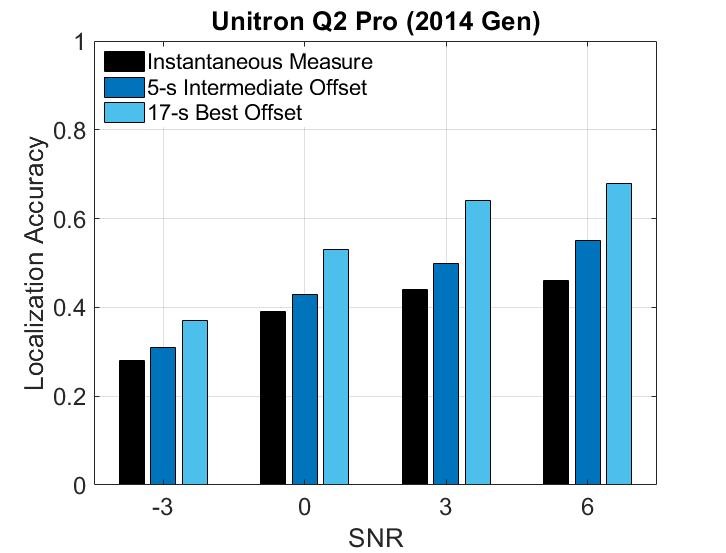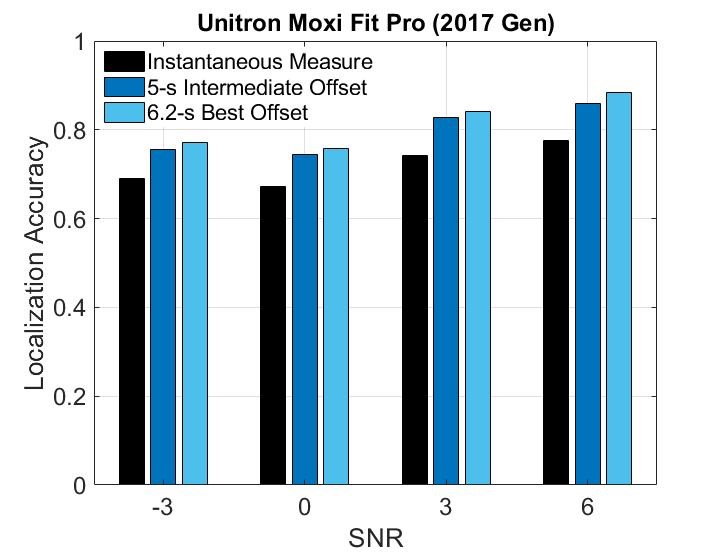Our Research Lab
Spatial Hearing Systems
In an ongoing study of spatial hearing systems with a major device manufacturer, Unitron, we have been evaluating the efficacy of the devices to detect speech in noise at various azimuths. Detection efficacy is the product of speed, accuracy, and technology, and what we have shown is that each of these pillars can advance over time without trade-offs. To test detection efficacy, we monitored detection over 4 hours of sampling using 40-s intervals consisting of stimulus combinations from the following:
- Four speech passages: male, female & M/F turn taking
- Five different types of diffuse background noise
Accuracy was the percentage of correct detections averaged over the full 40-s interval (“Instantaneous Measure”); or for the remaining interval following a 5-s offset to account for azimuth-change detection delay (“Intermediate Offset”); or for the remaining interval following the average switch time (“Best Offset”). The goal was to measure the precision of target speech detection for five conditions: no speech or speech from 0°, 90°, 180°, or 270° azimuth. Four SNR's were tested; -3 dB, 0 dB, 3 dB and 6 dB for each speech condition. Localization accuracy was measured relative to the onset of the acoustic scene as well as fixed and variable offsets to show temporal delay of system localization. As seen in the figure below, the localization accuracy was vastly improved between a 2014 generation device (left panel) and a 2017 generation device (right panel). In addition, the time elapsed from when the target speech changed location and the device detected the change reduced from 17 seconds to 6.2 seconds, respectively. We concluded that the introduction of newer chip technology meant that there is less of a trade-off between speed and accuracy of detection. With better technology both speed and accuracy of detection can be improved at once.


Speech localization accuracy from a major hearing aid manufacturer at various SNRs for an older model (left panel) and newer model (right panel).